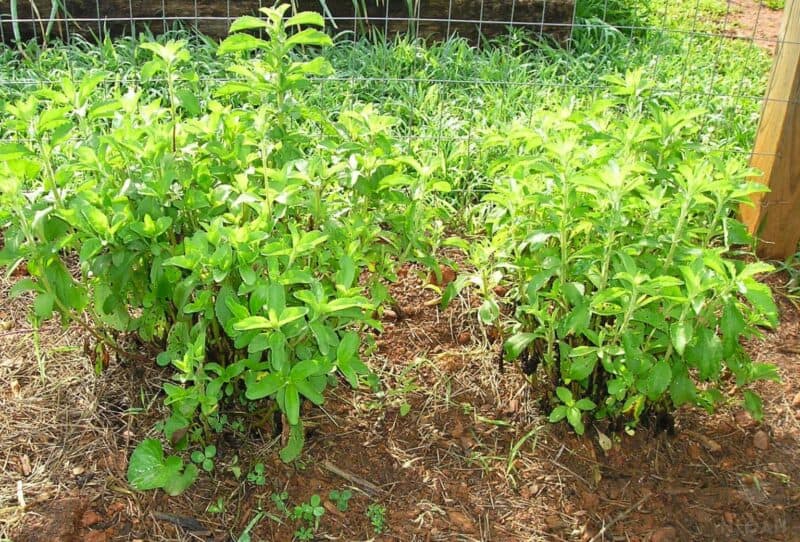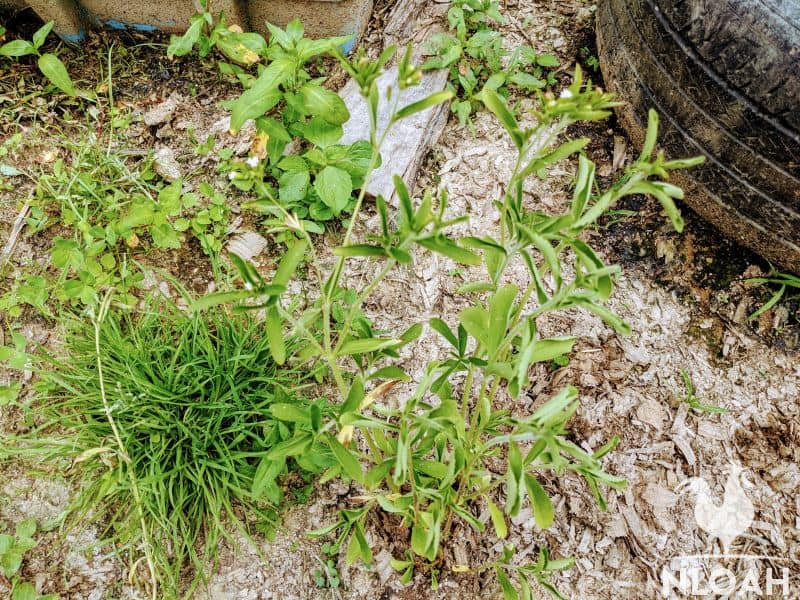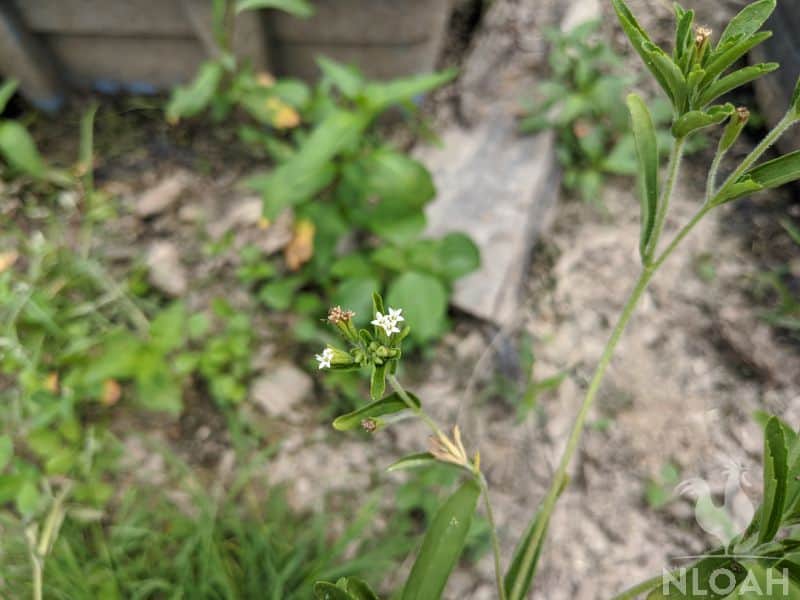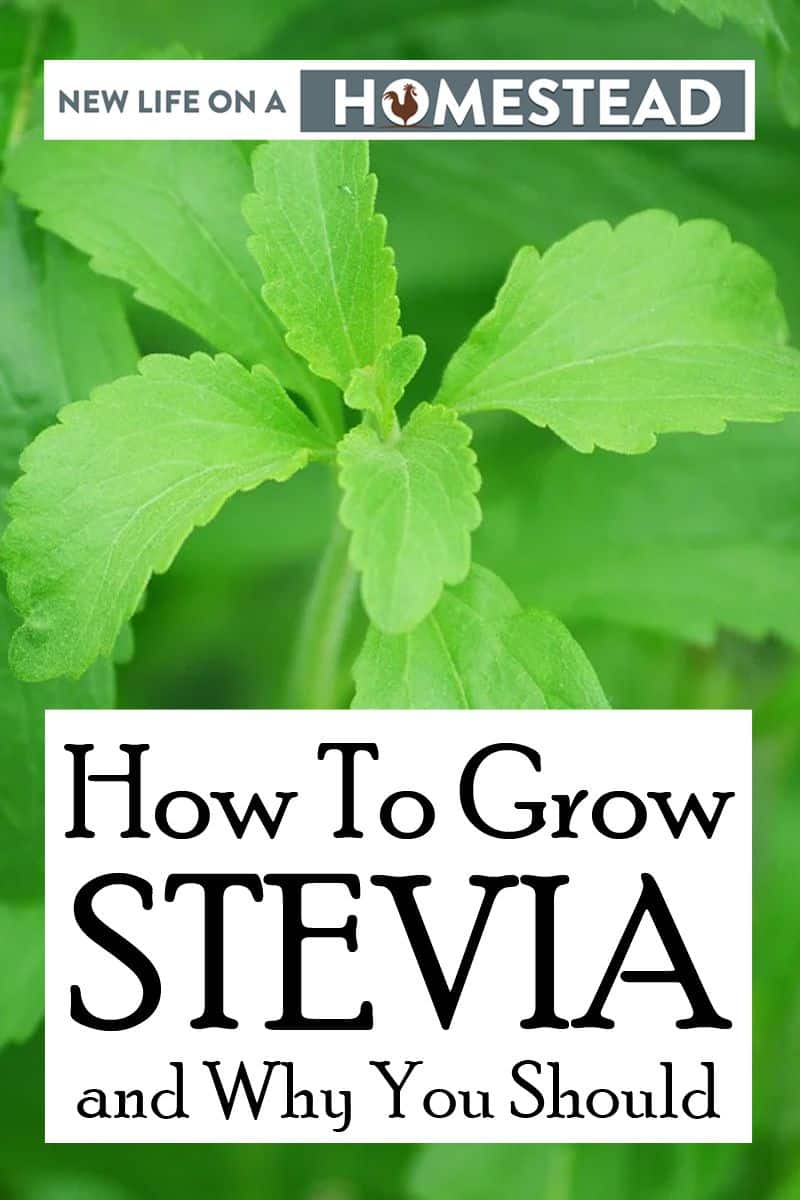Stevia is a natural sweetener that is 200 to 300 times sweeter than sucrose – table sugar.
The FDA has approved highly purified stevia for use in food, but has not done the same with raw stevia grown at home and used in the raw due to a lack of safety testing. This herb plant is often grown for both its culinary and natural medicinal benefits.

Unlike sucrose, stevia is pH stable, heat stable, and is not fermentable. It also contains zero calories, making it a favorite sweetener for folks on a diet and diabetes patients.
The leaves, as well as the young stems and tips of the stevia plant are often eaten raw. When cooked, these same parts of the plant are often consumed like other leafy greens.
Stevia Nutrients
- This sweet herb contains zero milligrams of fat, fiber, protein, and sodium.
- There is approximately one gram of carbs in a single commercially manufactured packet of stevia.
- The approximate glycemic load of a single stevia packet is about one.
- Stevia also contains no iron or calcium.
- Steviol glycosides – stevioside and rebaudioside compounds are present in this herb plant. The human body is not capable of metabolizing glycosides, so they are flushed from the body quickly through the kidneys – one of the reasons stevia is often used as a diuretic.

Stevia Growing Tips
- Stevia is a hardy perennial plant that is cultivated as a vegetatively propagated annual plant. The “parent” plant should be brought indoors to either a greenhouse or inside the home and placed in front of a window that gets consistent good sun or beneath a grow light for the winter. By following this recommended process, your plant should develop rootable stems that can be replanted in the spring.
- This herbal plant prefers a loose, loamy, and well draining soil.
- Plant stevia either in containers, or in a ground plot in an area that receives full sun to partial shade during afternoon hours.
- Marjoram and thyme are good companion plants for stevia.
- Stevia can be really difficult to sprout from seed; expect only half of the seeds planted to actually sprout and thrive. For best results, plant stevia from root cuttings taken from healthy and mature plants.
- These herbs typically grow between one to three feet tall.
- Plant stevia in a soil with a pH balance of 6.7 to 7.2.
- It is best to replant stevia from a new host plant about every two years because leaf growth tends to dwindle when plants go into a third year growing season.
- Stevia plants can often tolerate a mild frost, but being subjected to a hard frost will kill the roots.
- Cultivating stevia in a USDA Growing Zone lower than 6 is highly discouraged. It grows outdoors year round in zones 8 through 11, typically.
- Stevia plants will not usually bloom their crisp white flowers until the early weeks of fall. The leaves will have a far more tender and sweet taste if picked before these flowers bloom.
How to Grow Stevia
- When cultivating stevia from a young plant, dig a hole deep enough to receive the dirt from the initial starter container, and space the plants at least one foot apart. Stevia is a bushy plant that can easily crowd out other nearby plants.
- When planting stevia plants or seeds, space rows between one foot and one and a half feet apart.
- Stevia seeds can be planted any time indoors for year round cultivation inside, in pots. When planning to transplant the stevia plants outdoors, start them about 8 to 10 weeks before the final anticipated hard frost of spring.
- Plant the seeds about ¼ of an inch deep in potting soil.
- It takes approximately two to three weeks for stevia seedlings to emerge from the dirt.
- Once the stevia seedlings become visible, ensure they are getting constant sunlight 16 hours a day until they are four inches tall.
- Do not water stevia seedlings (or older plants) until the surface of the soil is dry. Over watering the plants will cause them to dampen off rather quickly.
- Once the stevia plants are four inches tall and have developed a minimum of three leaves, they should be transplanted from a seed starter tray or cell into four inch pots.
- Harden off the stevia plants for a week to ensure the young herbs are prepared for the environmental change from inside the home to the intense spring sun and chilly evenings.
- Loosen the root ball of the young stevia plants gently before putting them into the ground or a larger outdoor container.
- Water the stevia plants lightly after planting and, for best results, place a thin layer of mulch over them to help protect them from unseasonably cool weather.
- Take extra care when weeding around stevia plants because the branches of this herb are somewhat brittle, and can rip easily.
Stevia Plant Diseases
- Charcoal Rot
- Root Knot
- Septoria Leaf Spot
- Root Rot
- Stem Rot
- Pythium Root Rot of Stevia
- Sclerotinia Sclerotiorum Stem Rot
Stevia Pests
Stevia is an exceptionally hardy plant that thanks to the ultra sweet taste of its leaves, can actually repel many common garden pests. Slugs and aphids (especially when grown indoors) are typically the only problem pests for this herb.

Harvesting Tips
- Harvesting can begin once the flower buds have appeared – preferably before they blossom and open. I have best results when waiting until at least five buds have appeared on the plant before starting the harvesting process.
- Once the flowers blossom, the leaves truly tend to have a nasty, bitter taste.
- Typically, stevia leaves are harvested from the end of September through the beginning of October, depending on your growing zone.
- I highly recommend harvesting the stevia in the morning because that seems to be when the plant’s sugar content is at its highest ratio.
How to Preserve Stevia
Cut the stems from the plant and then gently remove the tips and leaves. Dehydrate the leaves in the sun on a mesh screen or on the lowest heat setting in a typical residential dehydrator.
If solar drying, it should take only one nice, hot early fall day to completely dehydrate the stevia plant parts. In a dehydrator, it usually takes about three to four hours to do it.
You can store the stevia plant parts whole in a Mason jar or vacuum seal bag, or powder them to not only save storage space, but also to make the natural sweetener easier to measure.
Stevia Medicinal Uses
This sweet herb has often been used as a base ingredient in natural home remedies designed to treat heartburn, to lower blood pressure, reduce uric acid levels, to treat diabetes, to curtail water retention, and for weight loss.
Stevia is native to Brazil, Paraguay, and Argentina, but it is grown around the globe as a natural sweetener and herbal remedy.
Extract from stevia leaves are readily manufactured and sold in many countries, but in the United States the raw leaves and extract from them have not been FDA approved for sweetening, only for use in skin care products, and as a dietary supplement.
In 2008, rebaudioside A, one of the compounds found in stevia, was labeled by the FDA as “Generally Recognized as Safe (GRAS) as a food additive sweetener.
Cooking and Baking With Stevia
- Fresh stevia leaves have often been used to sweeten both iced and hot tea. When sweetening a tea with stevia leaves, usse about ¼ of the raw matter as you would concentrate table sugar or powdered stevia.
- Approximately ⅛ of a teaspoon of dried stevia is equal to 1 teaspoon of sugar, when using it as a sugar substitute in cooking or baking recipes.
- While stevia is heat stable and fine to use in cooking recipes, it does not caramelize like sugar, and cannot be used to feed yeast for bread recipes.
- Because less stevia is needed in a recipe that asks for sugar, the bulk which would have been created by the conventional sweetener will be lost in the recipe.
- For best results when baking with stevia, choose a sugar-free recipe that is designed to address the specific attributes and drawbacks of nixing the sugar, like these:
Final Words
Stevia is a delicious and versatile natural sweetener that can make a DIY natural cough syrup taste so good it does not seem like you are ingesting a “medicine.”
But, as with any natural supplement, you should talk with your doctor before using because, while it may be deemed safe to use for most folks, that does not mean everyone can use it topically or internally without garnering an allergic response or potentially dangerous interaction with conventional medications.


Tara lives on a 56 acres farm in the Appalachian Mountains, where she faces homesteading and farming challenges every single day, raising chickens, goats, horses, and tons of vegetables. She’s an expert in all sorts of homesteading skills such as hide tanning, doll making, tree tapping, and many more.
